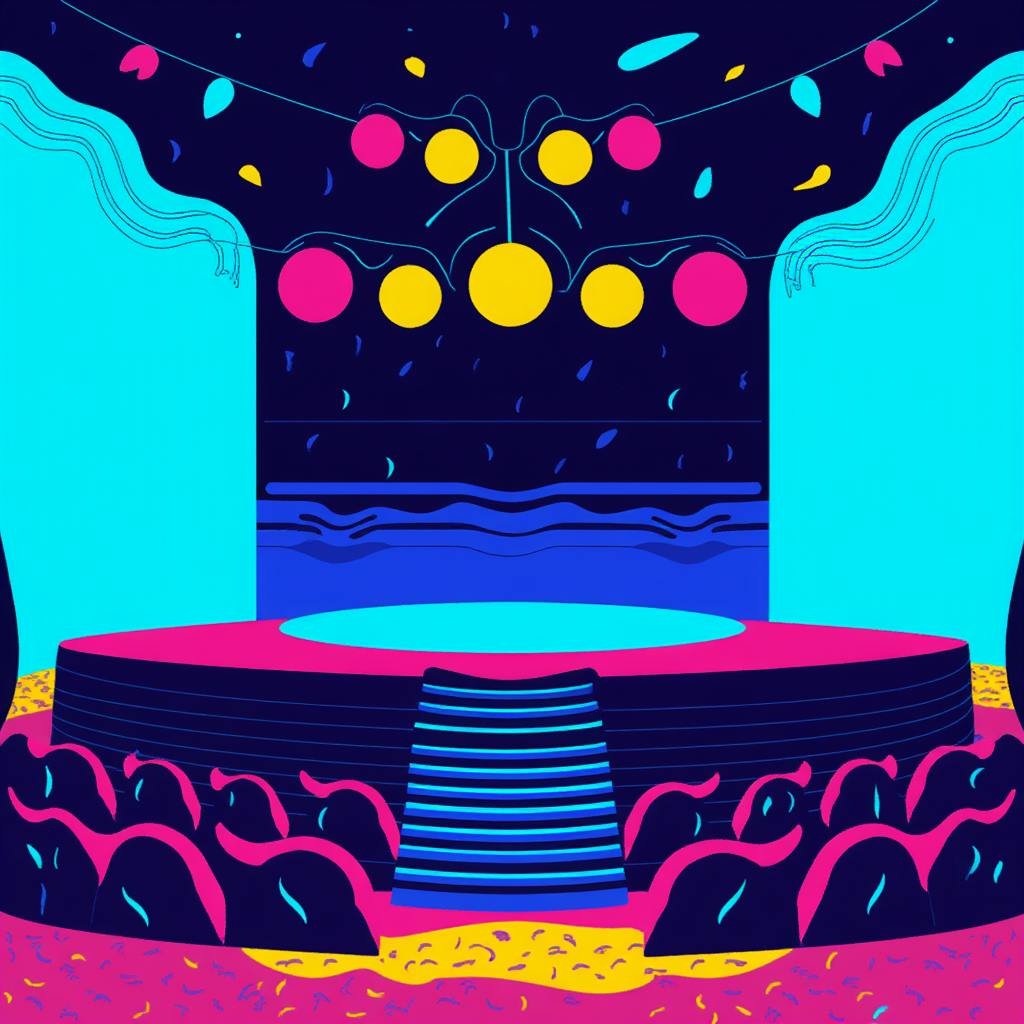In the dynamic world of event planning, event branding design is a powerful tool that can transform a gathering into an unforgettable experience. From the anticipation of an invite to the lasting memories captured in photos, a well-crafted branded visual identity for events does more than just communicate— it captivates. Event branding design is not merely about aesthetics; it embodies the essence of the event and carries it into every touchpoint with attendees. In this article, we explore the best practices for event branding design, offering insights into how to make your event stand out.
Understanding Event Branding Design
At its core, event branding design encompasses all visual elements associated with an event. It includes the logo, color palette, typography, and imagery that collectively create a memorable impression. Graphic design for event marketing plays a crucial role in ensuring that the event's theme resonates with the target audience. A clear understanding of the event's purpose and audience is essential in crafting a branded visual identity for events that is both representative and engaging.

AI made with Heather Crank
Key Elements of Effective Event Branding Design
- Consistent Branding: Cohesion across all platforms and materials is crucial. This means utilizing the same logo, colors, and fonts across invitations, social media, and on-site signage.
- Understand Audience Needs: Tailor the design to meet the preferences and expectations of your audience. Researching demographics can lead to a more impactful event branding design.
- Strategic Use of Visuals: Incorporate visuals that enhance the event's theme. Whether through photography, illustrations, or videos, ensure that every visual reflects the brand's identity.
Best Practices for Event Branding Design
To make your event branding design truly compelling, consider the following best practices:
- Innovate, Don't Imitate: While it's important to meet industry standards, striving for originality ensures your event leaves a lasting impact.
- Incorporate Experiential Elements: Elevate design from two dimensions to three. Think about how guests will interact with physical design elements.
- Prioritize User Experience: Functional design is beautiful design. Ensure that navigation and information are clear and intuitive.
- Trust and Authority in Design: A credible event branding design is one that resonates with authenticity and professionalism. Establish this by working with experienced designers or agencies familiar with creating branded visual identities for events. Additionally, soliciting feedback from peers and potential attendees can enhance the effectiveness of your design strategy.
Frequently Asked Questions
What are Event Branding Templates and Kits?
Event branding templates and kits are pre-designed packages that offer a coherent set of design assets. These can include customizable invitations, social media graphics, signage, and merchandise. They are particularly useful for those seeking a consistent look and feel without needing to design each element from scratch.
How Important is Brand Consistency in Event Branding?
Brand consistency in event branding ensures that every attendee recognizes and remembers the event. It's about creating a seamless journey from pre-event marketing to post-event follow-ups, establishing trust and enhancing credibility.
What Role Does Graphic Design Play in Event Marketing?
Graphic design for event marketing is pivotal because it not only attracts attendees but also conveys the event's message and values visually. It supports the narrative the event intends to tell, ensuring alignment between event objectives and participant experiences.
Are Event Branding Kits Worth the Investment?
Absolutely. Event branding kits offer a streamlined approach to maintaining consistency while saving time and effort. They serve as an excellent base for customized, cohesive branding, making them invaluable for planners who manage multiple design elements.
FAQ: Event Branding Design
What are the key elements in event branding design that make a statement?
Event branding design is crucial in creating a memorable and cohesive experience for attendees. The key elements that make a statement include:
- Logo and Visual Identity: Your logo is the face of the event and should be prominently displayed. It needs to be unique, recognizable, and align with your overall brand identity.
- Color Palette: Colors evoke emotions and convey messages. Choose a palette that reflects the event's theme and enhances the brand’s personality. Consistent use of these colors across all materials helps create a cohesive look.
- Typography: Selecting the right fonts is essential. Typography should be legible and match the event's tone, whether it's formal, casual, or somewhere in between.
- Imagery and Graphics: Use high-quality images and graphics that resonate with the audience and communicate the event's essence. Custom illustrations, patterns, or photography can set your event apart.
- Branded Materials: From banners to brochures, every touchpoint should be branded consistently. This includes digital assets like social media graphics and the event website.
How can I utilize event branding design to convey my brand's message effectively?
To convey your brand's message effectively through event branding design, consider these strategies:
- Align with Core Values: Your design should reflect your brand’s core values and mission. Use symbols, colors, and narratives that align with what your brand stands for.
- Understand the Audience: Tailor your design to connect with your audience. Understanding their preferences, interests, and expectations can help in crafting messages that resonate.
- Consistent Messaging: Ensure that all communications, be it visual or written, deliver a consistent message. Synchronize your event branding with other marketing channels.
- Storytelling: Use design to tell a story about your brand. This might be a journey, an achievement, or a future goal. Effective storytelling can captivate your audience and leave a lasting impression.
- Incorporate Interactivity: Interactive elements, such as digital displays or mobile apps, can engage attendees and reinforce your brand message in an innovative way.

AI made with Heather Crank
What are the latest trends in event branding design that can make my event stand out?
Staying abreast of the latest trends can give your event a competitive edge. Some current trends include:
- Sustainability: Eco-friendly designs are increasingly popular. Use sustainable materials and eco-conscious practices. This demonstrates social responsibility and is positively received by environmentally-aware audiences.
- Minimalism: Simple and clean designs often have a powerful impact. A minimalist approach helps in delivering clear messages without overwhelming the audience.
- Augmented Reality (AR) and Virtual Reality (VR): These technologies can create immersive experiences, making your event highly memorable and innovative.
- Personalization: Customize experiences for attendees. From personalized schedules to bespoke marketing materials, personalization can enhance engagement and leave guests feeling valued.
- Bold Typography and Color Schemes: Don't shy away from vibrant colors and bold fonts. These can capture attention and make your event look striking.
What factors should I consider to ensure my event branding design leaves a lasting impression?
To leave a lasting impression with your event branding design, consider these factors:
- First Impressions: Design your entry points, whether real or virtual, to wow your audience from the moment they arrive. This sets the tone for the entire experience.
- Memorability: Create memorable elements within your design—unique photo opportunities, distinctive sceneries, or interactive installations that people will talk about and share.
- Emotional Connection: Forge an emotional connection with your audience. Use stories or missions that resonate personally with attendees.
- Quality and Consistency: Ensure high-quality execution with attention to detail. Consistent branding across all platforms and materials is key.
- Feedback and Evolution: Gather feedback and assess the impact of your design. Be prepared to evolve and adapt design strategies for future events, ensuring continued relevance and engagement.
Conclusion
Event branding design is a strategic process that requires clarity, conciseness, creativity, and credibility. By understanding your audience, maintaining brand consistency, and employing effective graphic design techniques, you can create an event that not only meets but exceeds expectations. Whether through custom designs or event branding templates and kits, the goal remains the same— to create an engaging, memorable experience. By adhering to best practices for event branding design, you'll ensure your event not only makes a statement but leaves a lasting impression.

